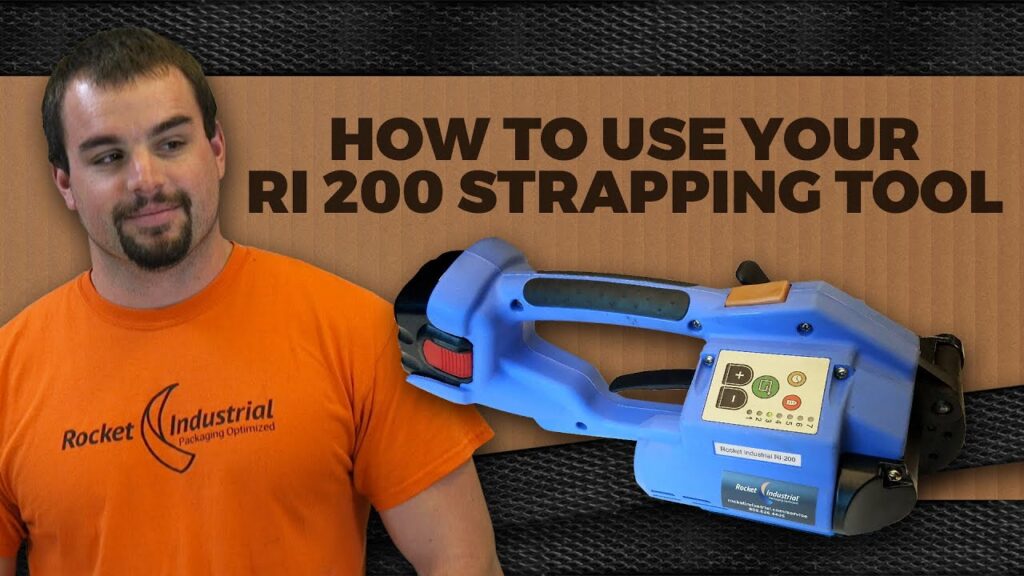Learn How to Use Your RI-200 Strapping Tool: A Comprehensive Guide to Industrial Strapping Machines
Industrial strapping machines have become an essential tool in various industries, providing efficiency and security in packing and shipping operations. However, learning how to use these machines effectively can be a daunting task for many individuals. In this article, we will provide step-by-step instructions on how to use your RI-200 strapping tool, ensuring that you can maximize its potential and streamline your packaging processes.
Before delving into the instructions, it is essential to understand the significance of industrial strapping machines and their role in modern packaging. These machines are designed to securely fasten loads, such as boxes, pallets, or bundles, by wrapping them with sturdy straps. By using a strapping machine, you can ensure that your packages are tightly secured, minimizing the risk of product damage or loss during transit.
Now let's move onto the step-by-step guide on how to use your RI-200 strapping tool effectively:
Step 1: Familiarize Yourself with the RI-200 Strapping Tool
Before operating the strapping tool, it is crucial to familiarize yourself with its main components. The RI-200 strapping tool typically consists of a tensioning mechanism, a sealing mechanism, and a cutter. Take a few moments to study each component and understand their functions, ensuring that you can operate the tool with confidence.
Step 2: Choose the Right Strapping Material
Selecting the appropriate strapping material is vital for achieving optimal results. The most commonly used materials for industrial strapping are steel and plastic. While steel offers exceptional strength and durability, plastic is often chosen for its flexibility and cost-effectiveness. Consider the weight, fragility, and size of the packages you are handling to determine the most suitable strapping material.
Step 3: Prepare the Strapping Machine
Ensure that the strapping machine is securely positioned on a stable surface, granting you the stability and control needed to apply the straps accurately. Additionally, make sure that the machine is properly calibrated according to the width and thickness of the strapping material you have selected. This calibration will prevent any malfunctions and guarantee the effectiveness of the strapping process.
Step 4: Load the Strapping Material
Insert the strapping material into the strapping tool, ensuring that it is properly threaded through the machine's guides. This will allow the material to flow smoothly during the strapping process without any unnecessary twists or tangles. Make sure to feed enough strapping material to securely wrap around your packages without running out.
Step 5: Tension the Strapping Material
Hold the strapping tool firmly and position it appropriately around the package you wish to strap. Begin by pulling the strapping material tightly across the load, ensuring that it is snug without causing any damage to the packaging. The tension should be firm enough to secure the contents but not so tight that it causes deformities or breakage.
Step 6: Seal and Cut the Straps
Once the strapping material is adequately tensioned, it's time to seal and cut the straps. Bring the tool's sealing mechanism into position, making sure that it clamps the strapping material correctly. Apply pressure to seal the straps securely, ensuring that they won't come loose during transportation. Finally, activate the tool's cutting mechanism to trim off any excess strapping material, leaving a clean and professional finish.
Step 7: Inspect and Verify
After applying the straps, take a moment to inspect the strapping job, ensuring that it meets your desired standards. Verify that the straps are securely fastened, without any signs of slack or loosening. This final step is crucial to guarantee the reliability and integrity of the packaging, assuring that your products will withstand the rigors of shipping and handling.
By following these step-by-step instructions, you will master the art of using your RI-200 strapping tool effectively. This indispensable tool can significantly enhance your packaging operations, ultimately leading to improved efficiency, cost savings, and customer satisfaction.
In conclusion, industrial strapping machines are valuable assets in various industries, simplifying the packaging process and minimizing the risks associated with transit and handling. Learning how to use your RI-200 strapping tool correctly is essential to ensure the secure and efficient shipment of your products. With the step-by-step instructions provided in this guide, you can confidently utilize your strapping tool, streamlining your packaging operations and achieving optimal results.
Strapping Machines
"Mastering Strapping Techniques: Your Essential Guide to Utilizing the RI 200 Strapping Tool and Industrial Strapping Machine"


